New Nissan Qashqai goes all-hybrid 19 | 02 | 2021
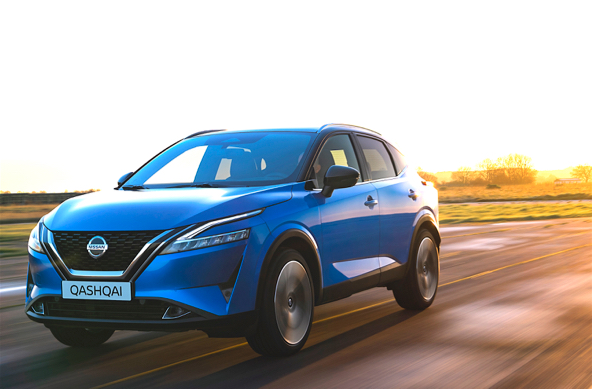
NISSAN’S ALL-NEW third-generation of the Qashqai, which created the family crossover sector when it first launched in 2007, is a radical departure from the strong-selling model it replaces. Fourteen years after the first model was launched, the 2021 Qashqai not only has a bold new look, but it sits on a new platform and, most importantly, uses hybrid-only powertrains. It also introduces a new ‘ePower’ unit. Due in UK dealerships before summer, expect prices to carry a slight premium over the outgoing model, which starts at £23,550. (Related: Nissan all-electric Ariya SUV)
Bigger than its predecessor — the newcomer is 35mm greater in length and 32mm wider than the outgoing model — the new dimensions combine to make the 2021 model look both longer and lower. And the fact 20in alloys are on the option list signals Nissan’s intent to ease the Qashqai upmarket, certainly when it comes to higher-specced models.
The front of the new Qashqai is dominated by Nissan’s new V-Motion chrome grille surround. The headlights — which now boast a new ‘boomerang’ shape — have also not only been slimmed down, but are now LED matrix.
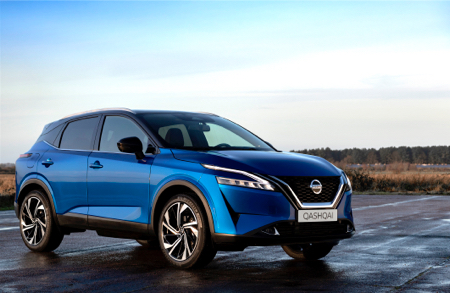
Sitting on an updated version of the Renault-Nissan-Mitsubishi Alliance’s CMF-C platform, this latest model has been designed, engineered and produced in the UK. According to Nissan, it not only has “athletic and dynamic” styling cues, but has a “more purposeful” stance. Whatever. But there’s no denying it certainly has a lot more sharp creases and angles. (Related: 2020 Nissan Juke unveiled)
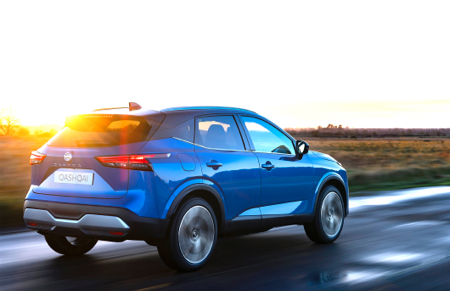
Designer Matt Weaver acknowledges the new angular aspects, and points to the move to electrified-only powertrains as the principal reason behind the new look. Why? Because the new powertrains introduced a heightened focus on aerodynamics. Hence, most noticeably, the front-end’s vertical air channels. The philosophy also accounts for the car’s slightly tapered shape. Both are key differentiators over the previous petrol/diesel Qashqai.
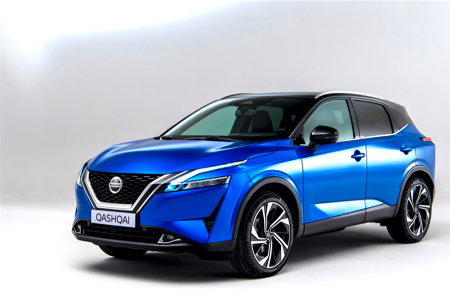
The newcomer is also 60kg body-in-white lighter than its predecessor, aided by a lighter body shell which boasts new composite and aluminium panels. Nissan says the 2021 Qashqai is also 41% stiffer, thanks to new welding and stamping techniques. That in turn has contributed to the car being safer, more responsive and more refined. (Related: Nissan GT-R ready for take-off)
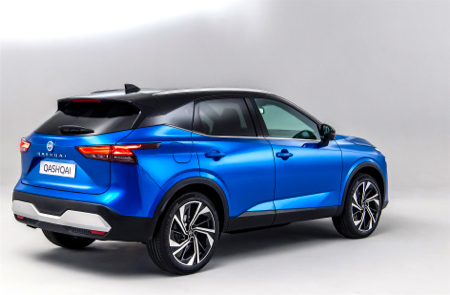
Two-wheel drive or four-wheel drive variants will be available, and buyers of the new Qashqai can have a choice of two electrified petrol powertrains. The most conventional pairs a 1.3-litre turbocharged petrol engine with a 12V mild hybrid system; the combination boosts performance and efficiency. Under deceleration, the system recovers energy to not only power on-board systems when the engine is stopped, but also provides a small torque boost when accelerating.
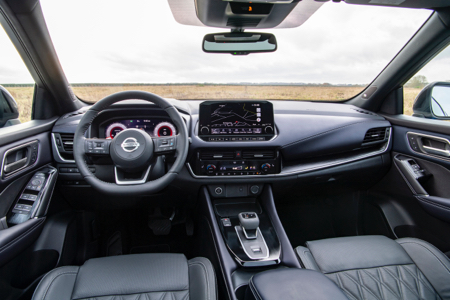
The petrol engine is available in two states of tune — 136bhp or 154bhp — and can be mated with either a six-speed manual gearbox or, on the more powerful car, a new Xtronic CVT. The 154bhp can also be ordered with four-wheel drive which, in turn, offers Standard, Eco, Sport, Snow and Off-road drive modes. (Related: Nissan X-Trail gets new efficient engines)
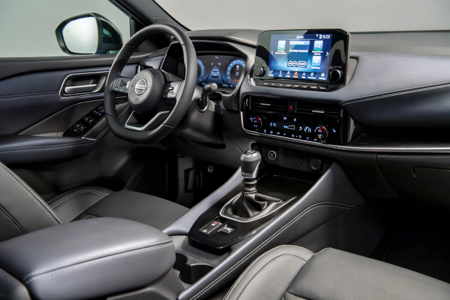
Making its first appearance on the Qashqai, as well as being its debut in Nissan’s European line-up, the ePower powertrain is — according to Nissan — “a unique approach to electrification”. It also says it can make “everyday driving exciting”, but I guess marketeers can themselves be excused for getting a tad over-excited.
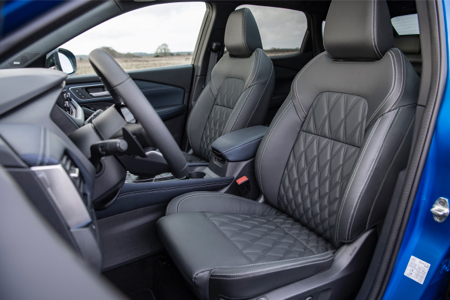
That said, the new technology certainly sounds intriguing. The 187bhp ePower drivetrain mates a 1.5-litre petrol engine to a 140kW electric motor for ‘self-charging’ functionality, just like a traditional full hybrid. So far, so good. But where ePower differs is that the petrol engine is unconnected to the driven wheels. Instead it’s used exclusively to power the electric motor. Clever. (Related: Scots first off the mark with new Leaf)
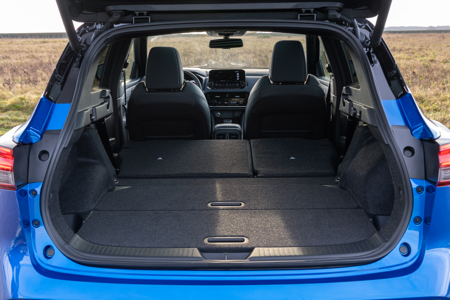
According to Nissan, this set-up delivers improved fuel economy and lower emissions. Official figures have yet to be released. The system also allows for the characteristic instant torque and quick acceleration of a pure electric car. Again, we’ll need to wait for official performance figures.
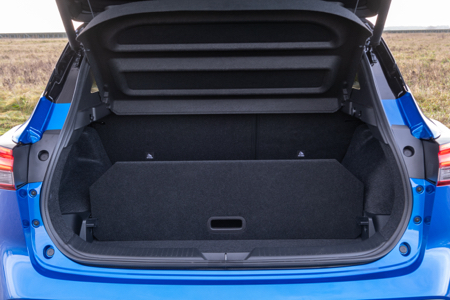
What we do know though is the ePower Qashqai will be fitted with an ‘e-Pedal’. First seen in the all-electric Leaf, it can be used for both acceleration and deceleration. It can also drive for limited distances (less than two miles) with the engine off.
The interior of the new Qashqai has been given a major overhaul, all aimed at establishing “a new segment standard for premium feel, distinctive design and enhanced usability”. Not surprisingly, advanced infotainment and safety technology is at the forefront.
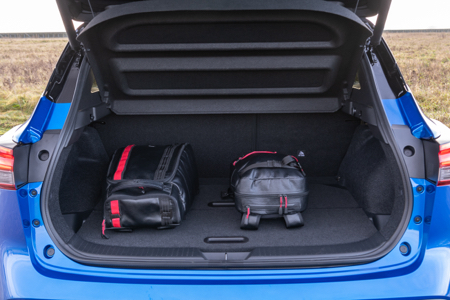
Out goes the predecessor’s 7.0in screen to be replaced by a new 9.0in high-definition multimedia touchscreen. The 10.8in head-up display is said to be the largest in its segment. Voice control functionality is provided by Amazon Alexa and Google Assistant, while the NissanConnect smartphone app allows remote control of a number of functions including the lights, central locking and horn.
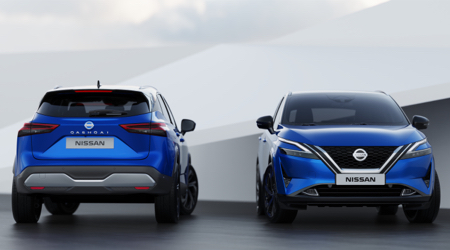
The designers have also improved forward visibility by introducing thinner A-pillars, a wider windscreen opening angle, and repositioning the door mirrors. Rear passengers now benefit from an extra 28mm of knee room, due mainly to an increase in wheelbase.
Rear access is also now easier thanks to the rear doors now opening to 85deg. It also means easier access to fitting rear child seats, and subsequently sitting the child into the seat. Boot stowage is also improved, up by 50 litres over the outgoing model, plus there’s a lower cargo floor thanks to a revised rear suspension layout.
Related: 2018 Nissan Leaf starts from £21,990
Keep up-to-date with all the latest news by following us on twitter.com/Scotcars
Jim McGill